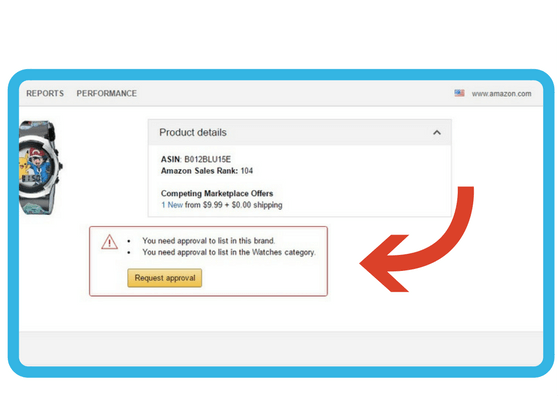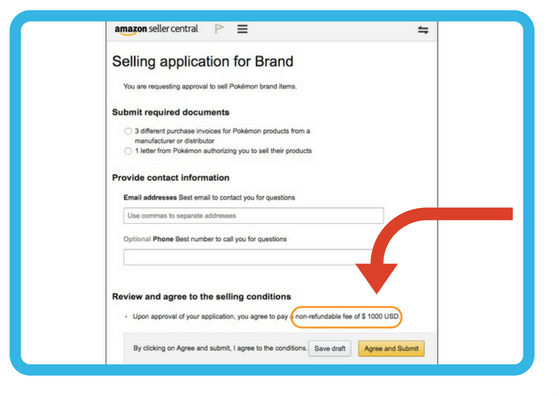A recent change to listing requirements means that Amazon Gated Selling certain products and bran… More Brands can only be listed from now on if sellers can pass stringent requirements and pay hefty fees.
Products historically prone to counterfeiting are increasingly harder to sell on Amazon. When it comes to fake goods, discontinued liquidation stock, and products sold by unauthorized resellers, most merchants welcome the change. However, new requirements for Amazon Gated Brands are making it more difficult even for the honest seller to carry on trading on the number 1 e-marketplace.
What You Should Know About ‘Restricted Selling certain product categorie… More Brands’
As of August 22, newly registered Amazon sellers and those who have just started selling Gated Brands must pay a non-refundable one-time fee and apply for permission to list their products. Established sellers and those who have sold these brands before will not be asked to apply.
There are currently four requirements for sellers wishing to register to sell Amazon Gated Brands:
- 3 separate invoices from the manufacturer or the authorized reseller;
- a letter of endorsement from the manufacturer;
- an agreement to pay a non-refundable fee once the application is accepted;
- an application submitted to Amazon, which includes the documents and the agreement above.
The per-brand fee that can be as high as $3,000. Several lists of Gated Brands have been published online, and Amazon sellers are contributing to them every day. An unofficial list by 888Lots mentions 221 brands. One from Seller Essentials currently mentions two fee levels:
- $1,000 for these brands: Hewlett Packard, LG, Microsoft, Sony, Disney, Funko, LEGO, Nerf, V-Tech, Under Armour, Oxo Good Grips, Pokemon, Shopkins;
- $1,500 for these: Star Wars The Force Awakens, Calvin Klein, Belkin, Kate Spade, Michael Kors, Nike, Polo Ralph Lauren, Tory Burch, Adidas, Asics, Converse Shoes, Nike, Toms Shoes, Alex And Ani, Carhartt, Converse Shoes, Toms Shoes.
How to Apply to Sell Restricted Brands
To apply, look for the Sell on Amazon button under the Add to Cart section on the upper right corner of the product page.
Then press the Request approval button. Notice that you need approval for both category and brand.
Note the non-refundable fee, attach the 3 invoices and the endorsement letter, and then press Agree and Submit.
Some experts believe these new requirements will discourage merchants from selling counterfeit goods. Others believe that professional counterfeiters, the ones with the most valuable inventory to unload onto the market, will find this to be a minor setback, and that honest but small sellers stand to lose the most. Retail and online arbitrage The practice of buying products f… More sellers, in particular, are being dealt a bad hand.
Still, this is a first step in tackling the type of dishonest practices on Amazon that can drive away companies like Birkenstock. This iconic brand will no longer be available on Amazon starting January 1, 2017. Birkenstock is due to pull out all of its products from Amazon’s catalog in 2017, and to officially forbid its partners from selling them on Amazon. The German shoe manufacturer will direct its customers to authorized retailers from that point on.
More information is available on the Seller Central forums, but there’s still some confusion as to the brands and the fees involved. So, we advise our readers to carry out their own research or to contact Amazon when considering a new brand.










2 Responses
Counterfeiters can easily pay the fees without a sweat…because they are enjoying huge margins…
The legit sellers are the ones who are affected here…so in the end most the legit sellers will be forced out because of the fees whereas the counterfeiters will easily stick around and be able to survive and indeed get an even bigger market share. So this move is not going to help but only hurt fair business practices.
Hi Bikram,
Thanks for reaching out to us. We definitely understand your point of view. Amazon does too, actually, and they’ve demonstrated this by using part of the revenue from these fees to seek out and crack down on counterfeit items on their platform. Ever since the implementation of these rules we’ve seen a huge uptick in the amount of notifications that Amazon sends out in regards to inauthentic items. Also, it’s worth noting that part of the ungating process involves providing Amazon with proper invoices for all of your items. Amazon is quite strict about these invoices, and they won’t approve you to sell if your documentation isn’t %100 on the level. Please contact us if you have any questions about ungating, or if you’d like any further clarification.
Thanks again,
Kate